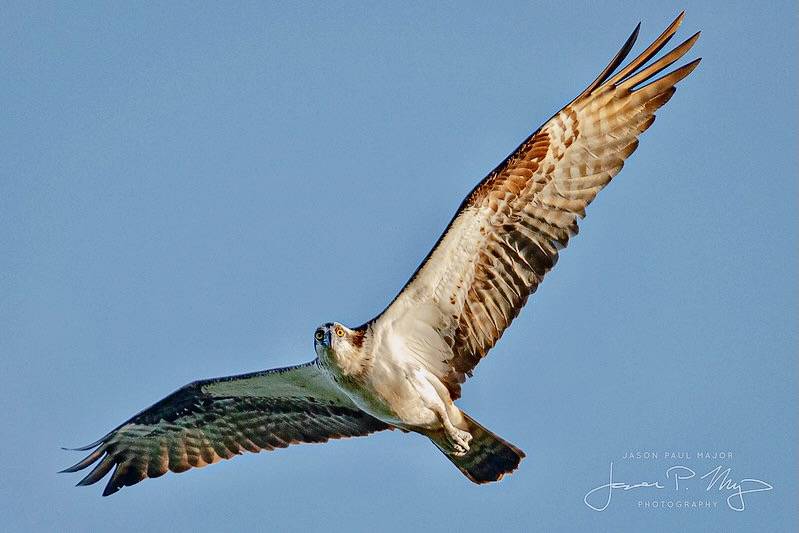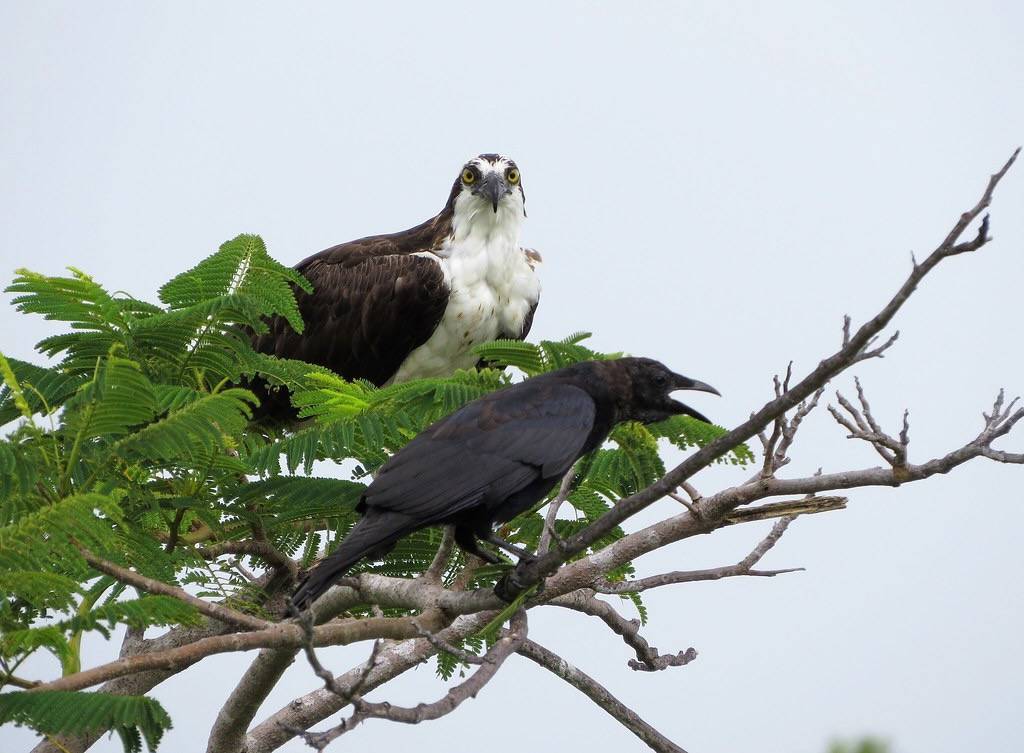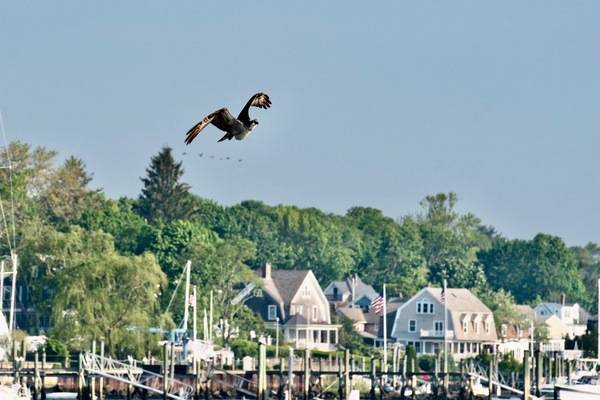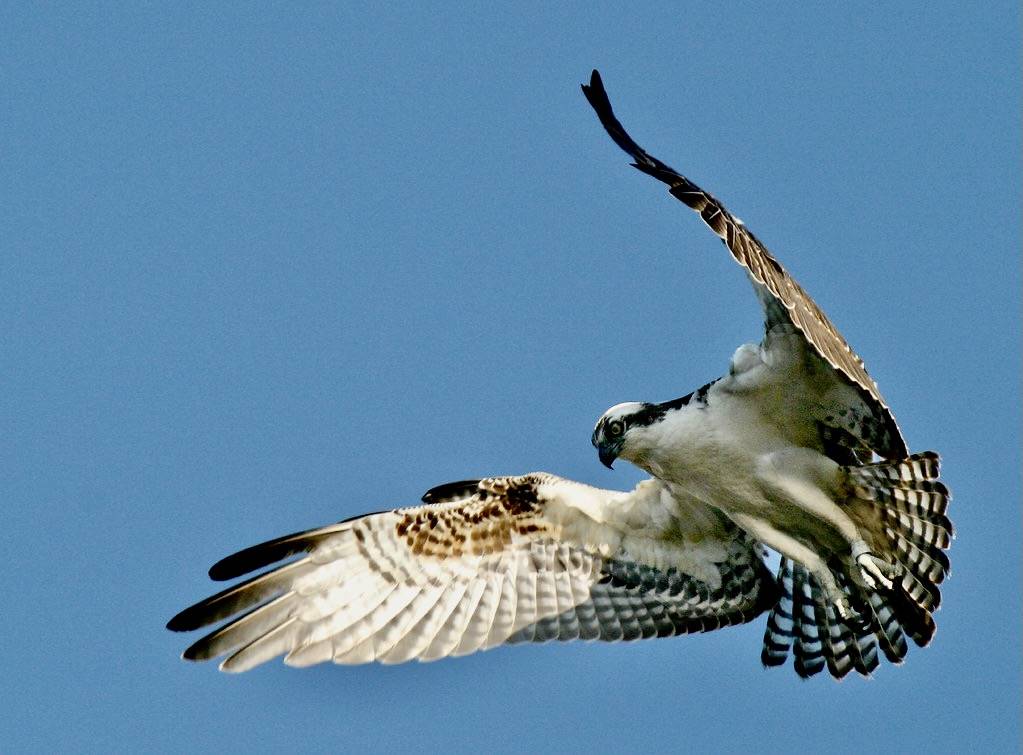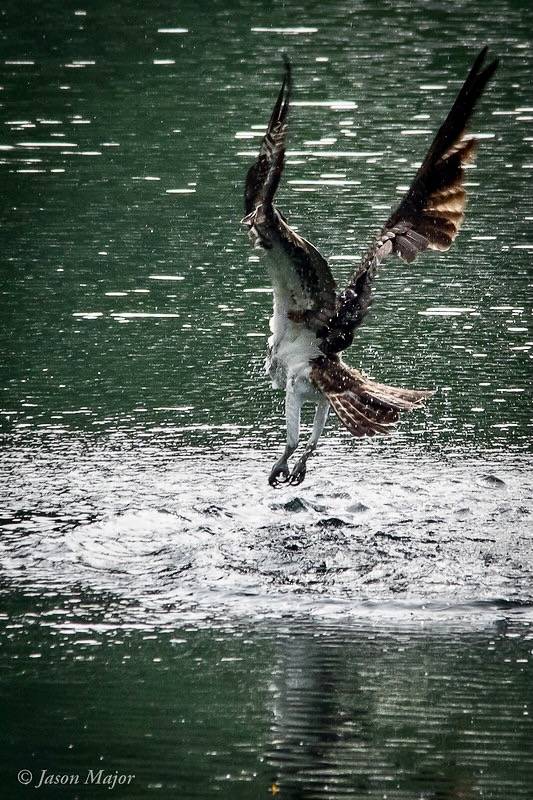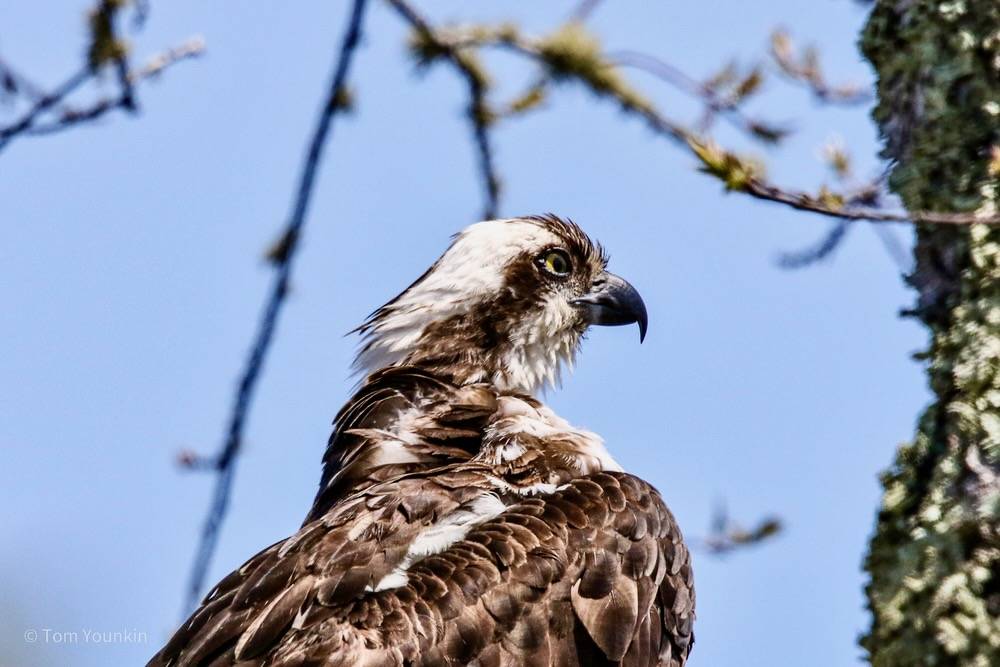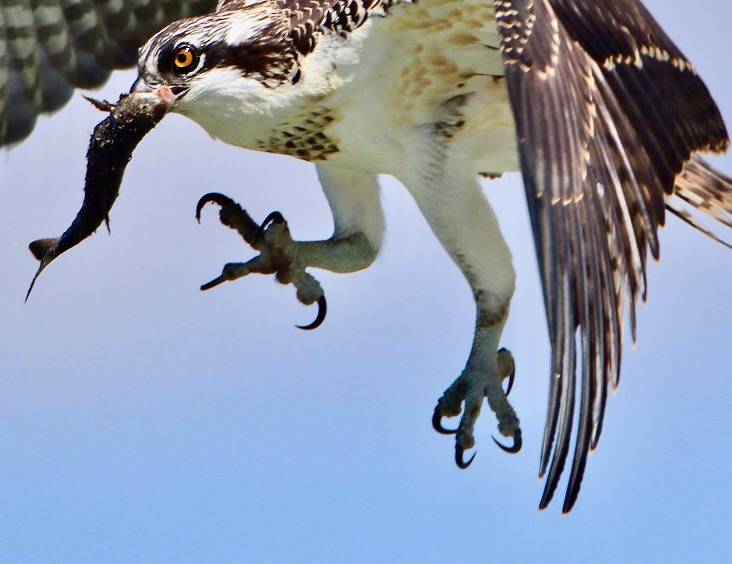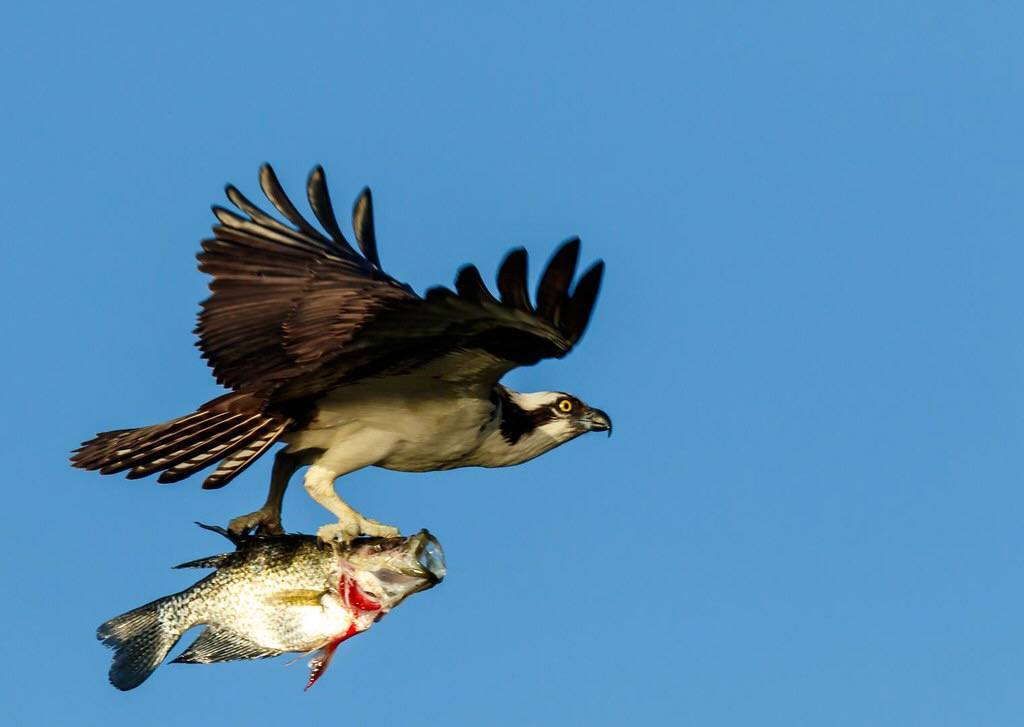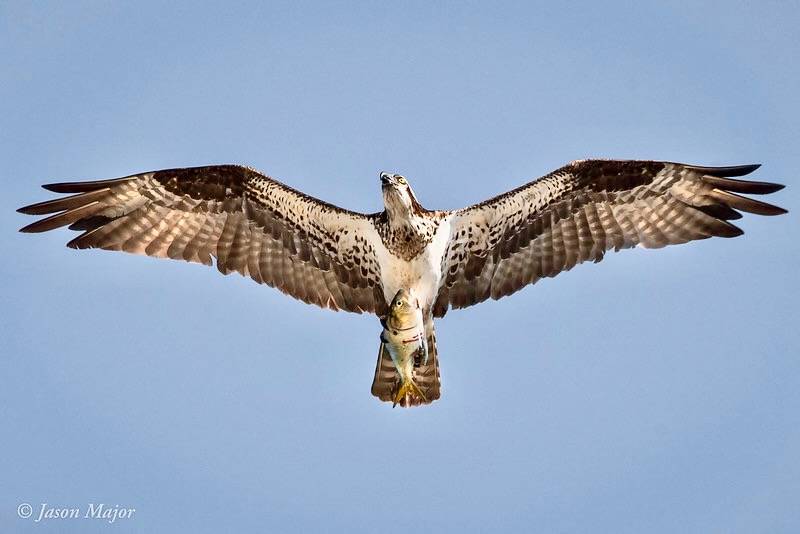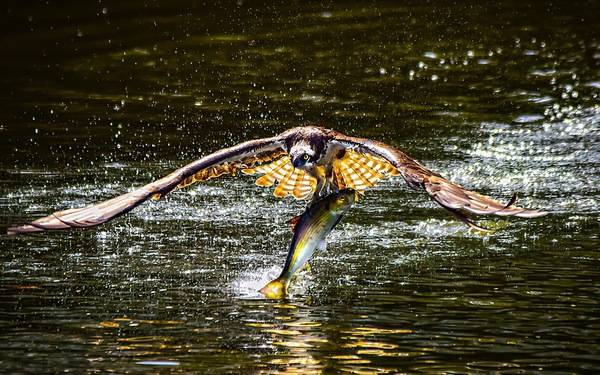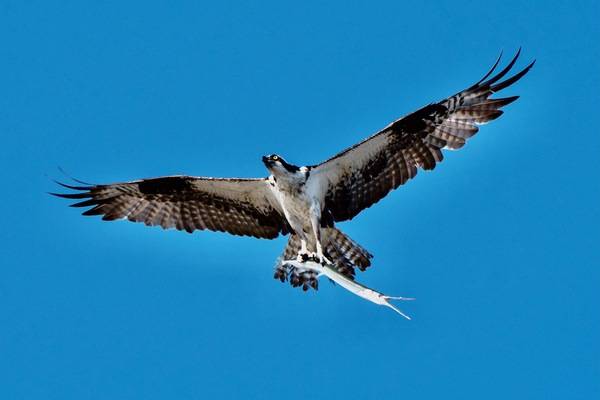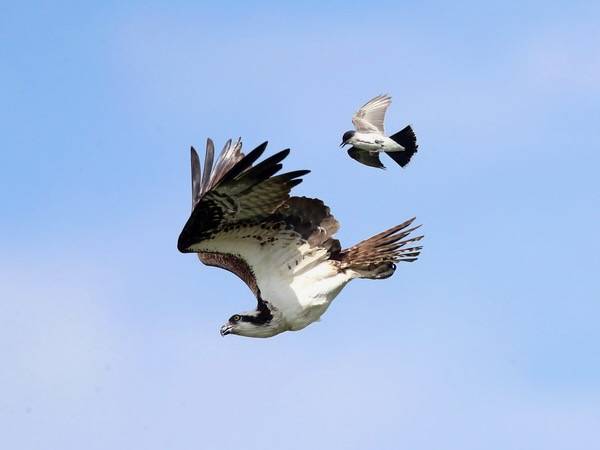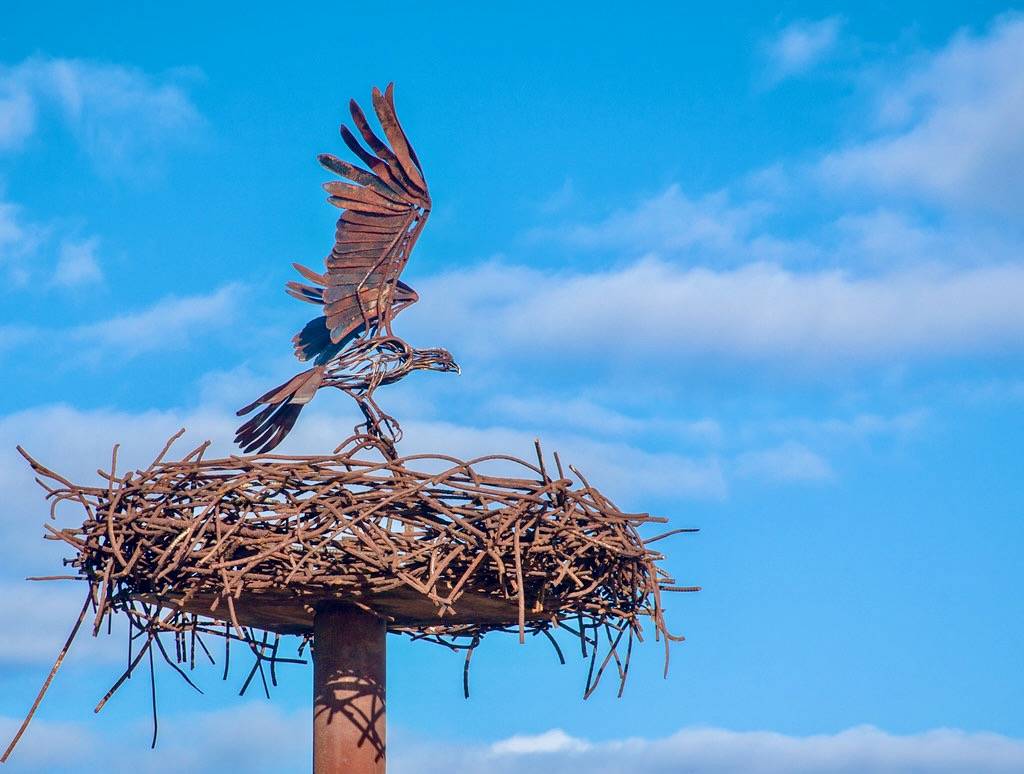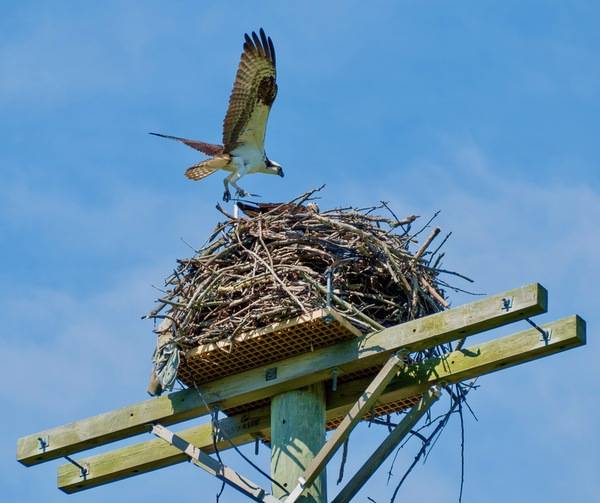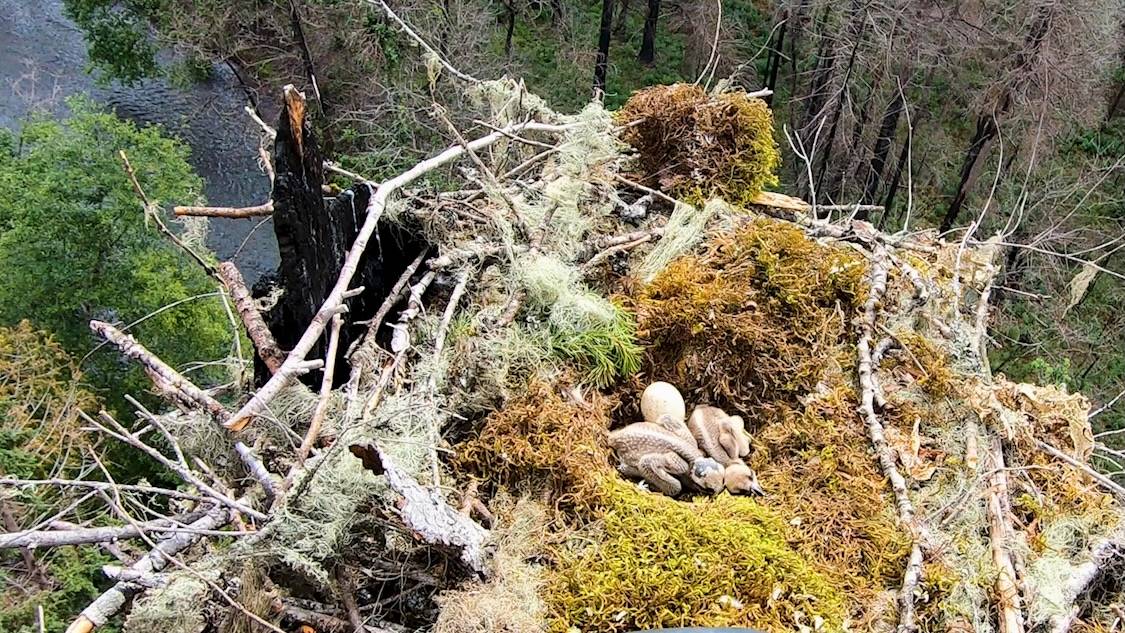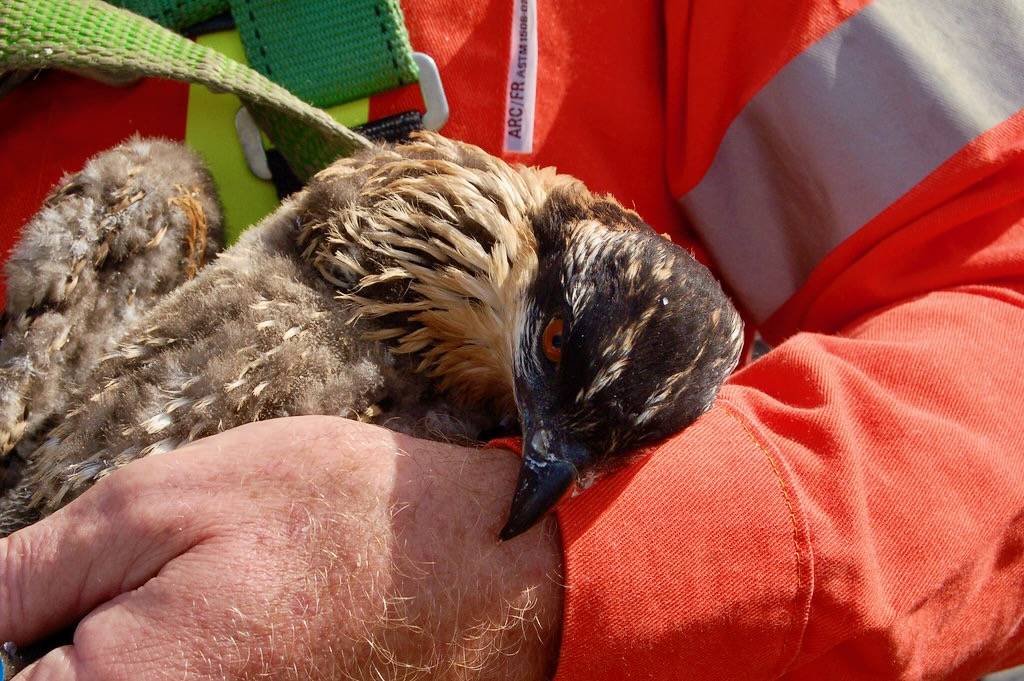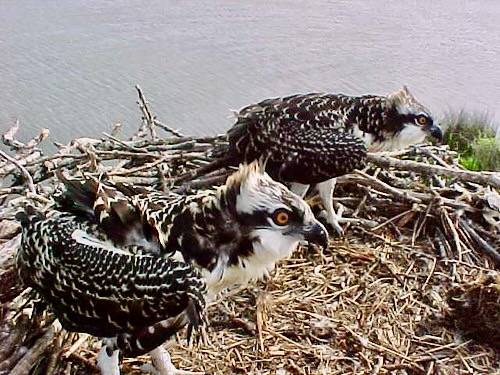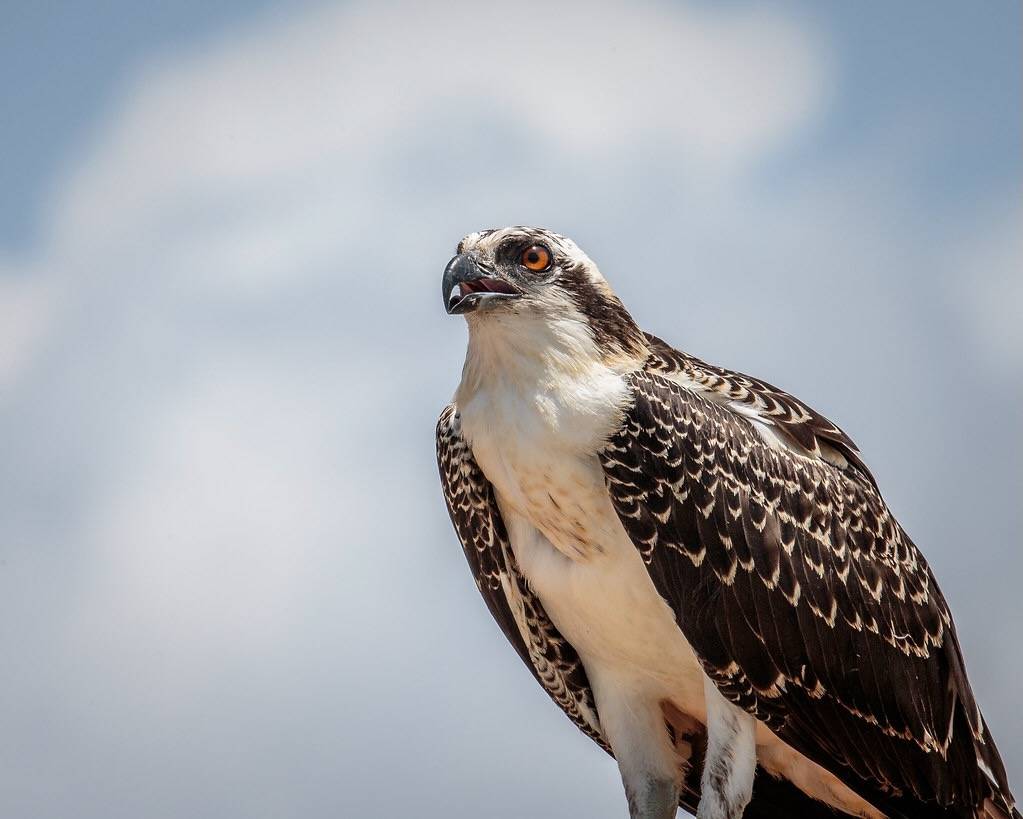Osprey
Sightings of Ospreys at Salter Grove have been reported since 2011, usually while they were fishing in North and South Coves from April to October. Early in the season only solitary adults are seen, but by late July and August, one or two immature birds join parents on family fishing expeditions. Both the Marsh Trail and the causeway are excellent vantage points to watch this raptor in action.
The Osprey eats live fish for most of its diet, rarely feeding on carrion like other raptor species. It is able to see swimming fish from as high as 130 feet in the air. Once prey is detected, it plunges feet first into the water to capture the targeted fish. It is able to close off its nostrils to prevent water from entering when it dives below the surface.
Three important features of its feet guarantee a secure grip on fish caught. The outer toes can swing towards the back to result in a tight pincer-like hold with two toes in front in opposition to two in back. The underside of its toes are sandpaper-like, and the talons have backward facing scales to prevent slippage.
Although Salter Grove appears to be a great fishing ground, it is not the breeding site of the Ospreys observed in the park. They commute from an elevated nesting platform less than a mile away at Gaspee Point. The platform that holds the large stick nest was erected since 2011 and according to one Gaspee resident, has been used by a breeding pair every year since at least 2013.
Ospreys will breed anywhere with a suitable nest site within 12 miles of a fish-rich body of water. Besides isolated tall trees, their large stick nests have been found on chimneys, telecom structures, water towers, and of course, man-made platforms. Successful nests are reused by a permanently mated pair and can grow quite large over time as new sticks are added every year.
They occur on all continents except Antarctica and is second only to the Peregrine Falcon in its cosmopolitan distribution. Populations are either migratory or sedentary depending on whether the fish supply remains stable through the year. The Ospreys seen at Salter Grove may winter as far south as South America.
Ospreys have not always been as common in Rhode Island as they are now--there were only two active nests in 1967! The heavy usage of pesticides such as DDT during the 1960's and 1970's caused many fish-eating species to drastically decline in numbers. Besides the Osprey, a few of the other predators affected included the Bald Eagle, Double-crested Cormorant, and Peregrine Falcon.
So what happened? Although primarily intended to kill insects, the pesticides also negatively affected their vertebrate consumers. The toxic chemicals do not break down after ingestion and would accumulate in body tissue. Thus, predators near the top of the food chain such as Ospreys and other raptors get extra concentrated doses in their food. In birds, the reservoir of heavy chemicals inhibits calcium deposition which resulted in the production of thin egg shells that would break before chicks were hatched.
By 1972, DDT was banned in the United States and In 1977, the Rhode Island Department of Environmental Management initiated conservation measures to protect Osprey habitat as well as increased the number of breeding platforms. By 2008, there were 117 active nests.
In 2012, the Rhode Island Audubon Society assume responsibility for monitoring ospreys. Their data for 2023 documented 231 active nests out of 322 surveyed. From two nests in 1967 to 231 nests in 2023--not too shabby!

